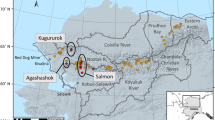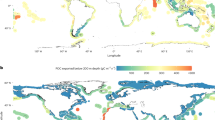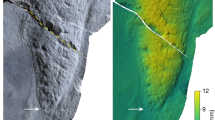Abstract
Pyrosoma species are commonly encountered as surface or midwater planktonic organisms. Among photographs taken of the sea-floor of Cook Strait, New Zealand, two exposures show what are undoubtedly tunicates, almost certainly Pyrosoma atlanticum atlanticum Peron, resting on or swimming just above the bottom at a depth of 160–170 m.
This is a preview of subscription content, access via your institution
Access options
Subscribe to this journal
Receive 51 print issues and online access
$199.00 per year
only $3.90 per issue
Buy this article
- Purchase on Springer Link
- Instant access to full article PDF
Prices may be subject to local taxes which are calculated during checkout
Similar content being viewed by others
References
Thompson, Harold, “Pelagic Tunicates of Australia” (Commonwealth Council for Scientific and Industrial Research, Australia, Melbourne, 1948).
Author information
Authors and Affiliations
Rights and permissions
About this article
Cite this article
HURLEY, D., McKNIGHT, D. Occurrence of Pyrosoma on the Sea-Floor 160 Metres Deep. Nature 183, 554–555 (1959). https://doi.org/10.1038/183554a0
Issue Date:
DOI: https://doi.org/10.1038/183554a0
This article is cited by
-
Jelly-falls historic and recent observations: a review to drive future research directions
Hydrobiologia (2012)
-
Occurrence of Pyrosoma on the Continental Slope
Nature (1960)
Comments
By submitting a comment you agree to abide by our Terms and Community Guidelines. If you find something abusive or that does not comply with our terms or guidelines please flag it as inappropriate.



